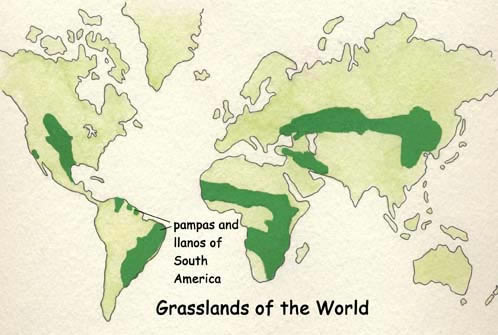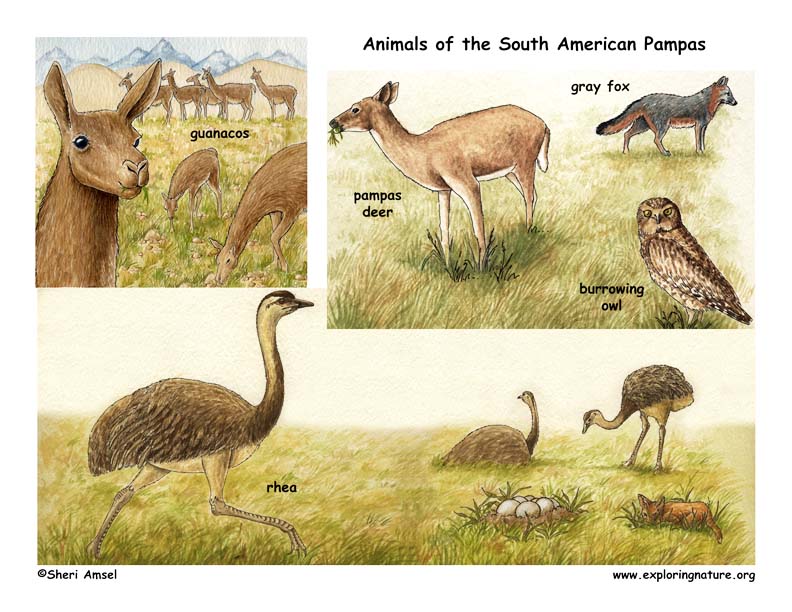

In Argentina, a flat, grassy plain, called the pampas, spreads from the Atlantic Ocean to the Andes Mountains.
Much of the pampas are dry and sandy. The areas that have water have been taken by the people of Argentina. There are still some of the natural grassland left, and with it, some of the wildlife.
Burrowing owls hunt for insects, rodents, or birds. Then they go underground to sleep. Pampa deer and gray fox also live on this grassy plain. Small herds of guanacos live in the wild here. They are perfectly suited for the pampas. Their long necks help them see danger coming, and they can run quickly across the rocky plains. Newborn guanacos are on their feet within fifteen minutes of birth, and within an hour they are speeding along next to their mothers. A few herds of rhea, an ostrich-like bird, still roam the grasslands. One male protects a group of females and their eggs from hunting foxes or skunks. He then goes on to raise the young. The rhea cannot fly and have been hunted for their meat, for their feathers, and for sport almost to extinction.
Silver pampas grass.
When you research information you must cite the reference. Citing for websites is different from citing from books, magazines and periodicals. The style of citing shown here is from the MLA Style Citations (Modern Language Association).
When citing a WEBSITE the general format is as follows.
Author Last Name, First Name(s). "Title: Subtitle of Part of Web Page, if appropriate." Title: Subtitle: Section of Page if appropriate. Sponsoring/Publishing Agency, If Given. Additional significant descriptive information. Date of Electronic Publication or other Date, such as Last Updated. Day Month Year of access < URL >.
Amsel, Sheri. "Pampas of South America" Exploring Nature Educational Resource ©2005-2024. December 13, 2024
< http://www.exploringnature.org/db/view/1715 >

